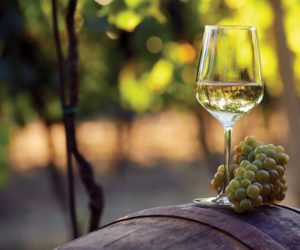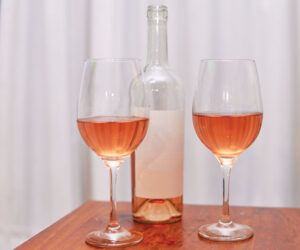Q
In The Winemaker’s Answer Book (on page 54), you say to add 12 grams of citric or tartaric acid to your sanitizing solution. Is it OK to use an acid blend?
Hayden Alexander
Bouctouche, New Brunswick
A
There are a couple of reasons I suggest we use tartaric or citric in the pages of The Winemaker’s Answer Book for cleaning and sanitizing purposes. First of all, acid is added to sulfite solution to increase the effectiveness of the sulfite by lowering the solution’s pH. The first, and most practical, reason for adding citric or tartaric acid is that food-grade acid blend (sold for adjusting the acidity of musts and juices) tends to be more expensive and sold in smaller packets than straight up citric or tartaric acid (which often can be had at a bulk discount in larger bags).
The second and perhaps the most important reason is that if you’re doing your final rinsing with an acid blend that contains malic acid, you’re potentially releasing a food source for various bacteria into your equipment and into your cellar’s environment (like drains). Even if you rinse well with water afterwards, you are still needlessly introducing energy sources for bacteria into your winemaking environment. Call me paranoid, but I would never unnecessarily put yeast or bacteria food out where some of the “bad guys” might get it. For instance, I would never use an acid blend for a “wet storage” solution (acidified sulfur dioxide solution) for a barrel.
Q
I made my first batch of Merlot and tried a bottle after it aged for a month. I noticed that the wine had some carbonation to it. Will this go away after aging it longer? Did I do something wrong?
Justin Sharer
Dearborn Heights, Michigan
A
Welcome to the wonderful world of home winemaking — and welcome to your very first “adventure.” You seem to have an aversion to sparkling Merlot? I know many winemakers who would tear their hair and gnash their teeth in an effort to achieve in their batch what you clearly did not intend in yours. And there, alas, lies the rub. You set out not to attain a sparkling red wine but a non-fizzy, non-sparkling red wine more in line with those Merlots one can buy at finer winery tasting rooms everywhere. I understand. Sparkling reds are not for everyone (even if one does live in Australia where such things, I hear, are popular) . . . but I digress.
Clearly, the mousse in your Merlot is carbon dioxide gas. Less clear, however, is its exact source or point of creation in your wine. Be that as it may, I think we can work together to sleuth out the possibilities, which will be instructive to you (and hopefully to fellow readers) as you continue along the vinous path of righteousness.
The facts stand thusly: After a month of time in the bottle, you noticed perceptible bubbles (carbon dioxide gas) in your Merlot. The gas you’re experiencing most likely evolved from one of the following three scenarios: 1) you bottled your wine with residual carbon dioxide (presumably left over from the primary and malolactic fermentations) or 2) you bottled your wine with residual fermentable substances or 3) a combination of the two. Let’s address the scenarios one by one.
When yeast eat up sugar and produce alcohol (fermentation) they by default also produce carbon dioxide gas. Similarly, if your wine also underwent malolactic fermentation (standard for red wine production) then your Merlot also got some tiny bubbles from the lactic acid bacteria as they ate malic acid and turned it into lactic acid, excreting carbon dioxide again all along the way. Carbon dioxide gas can also be produced by rarer, but especially nasty, spoilage organisms (more on that later). The end result is that, as you can see, new wines experience a heck of a lot of carbonation in the first few months of their lives.
Fortunately, most wines, during what I call the “bulk aging” process where we let the new wines hang out in barrels or other non-bottle containers, will naturally lose this carbon dioxide gas over a few weeks to a few months. This can be largely dependent on aging time, cellar temperature and how often a wine is racked (siphoned off the lees or sediment into another container) before bottling.
In reference to the temperature of your cellar I just mentioned, due to the laws of chemistry and physics, the colder the cellar temperature, the more those carbon dioxide molecules will want to remain in the liquid phase, i.e. be dissolved in the wine. Aging time is important too because happily, by the time a nice rich Merlot has been racked a few times and is ready to bottle (9–18 months, depending on style and grape quality), most carbon dioxide gas will have naturally evolved into the gaseous phase and out into the cellar. When the wine is bottled it will be completely “still,” that is, it will taste non-carbonated.
Bottling too early, before all of the fermentation gasses have had a chance to evolve out of the wine, may have been the mistake you made. You can avoid this next time by making sure you give your wine enough time to naturally lose all of the residual carbon dioxide it might still be holding on to after all the fermentations are complete. Many of your fellow readers who live in colder climates and who have cellar temperatures under 50 °F (10 °C) from fall through mid-spring often find that their wine won’t lose enough residual carbon dioxide for many months following harvest. This is completely normal and shouldn’t worry you if you keep your containers topped up and your free sulfur dioxide levels at a level appropriate for your wine’s pH (not knowing what it is, 28–32 ppm is a good starting point). Once the weather warms up and you take the opportunity to give the wine another rack, your wine should lose most, if not all, of its carbon dioxide load.
This is, however, assuming the wine is “dry,” or has nothing fermentable left in it, which brings us to scenario number two, the dreaded incomplete fermentation. Essentially, if you cork up your little vino whilst it still has fermentable sugar (6-carbon for your garden variety Saccharomyces, 5-carbon for more exotic Brettanomyces strains) or malic acid (favorite lunch of Lactobacilli and others) and you do not sterile filter to exclude said bugs, you’re setting up your wine to be one funky, fizzy party in the bottle.
Please also be aware that I use the term “sterile” filter advisedly. It’s technically impossible, under realistic cellar conditions, to completely exclude 100% of all microorganisms 100% of the time when we bottle wine. The best we can do is to hope to control them in a reasonable manner and create environments (like dry, filtered wine) that they aren’t very happy in. The air we breathe (and the air in your cellar) are replete with micro-organisms (yeast, bacteria, etc); the best we can hope to do is to take away their food source (sugars, fermentable acids) and cut down on their numbers so much that they won’t reproduce, eat up the food source and along with their progeny produce lots of carbon dioxide. You see where I’m going with this. It’s possible that you bottled up what you thought was still (non-carbonated) wine and because it had residual glucose/fructose or malic acid, an opportunistic microbe got a toehold and went to town.
And last but not least, the third scenario is a mix of the two, depending on if you think you allowed enough time for the carbon dioxide to exit your wine and if you believe you didn’t have anything measurable left to ferment. The bad news is that no amount of bottle aging will reduce the level of carbonation you’re currently tasting in the bottle; if you’re suffering from scenario two or three, the amount of carbon dioxide you sense could indeed increase as a partial fermentation progresses. My advice is to either learn to live with sparkling Merlot, or, if you simply can’t do that this time around, you’re going to have to uncork each bottle, sterile filter and re-bottle. Because of oxidation and general roughhousing of the wine, there’s no guarantee you’d like this result any better. But for the next batch
of Merlot you will be more prepared though, right?
UC-Davis graduate and professional winemaker Alison Crowe has been answering hundreds of your winemaking questions as the “Wine Wizard” since 1998. She is the Winemaker for Plata Wine Partners, LLC, and provides custom winemaking services and consulting to nationally distributed as well as small start-up brands. Her columns are collected in The Winemaker’s Answer Book, available at www.winemakermag.com/store. Do you have a question? Send your inquiries to her at: [email protected].







